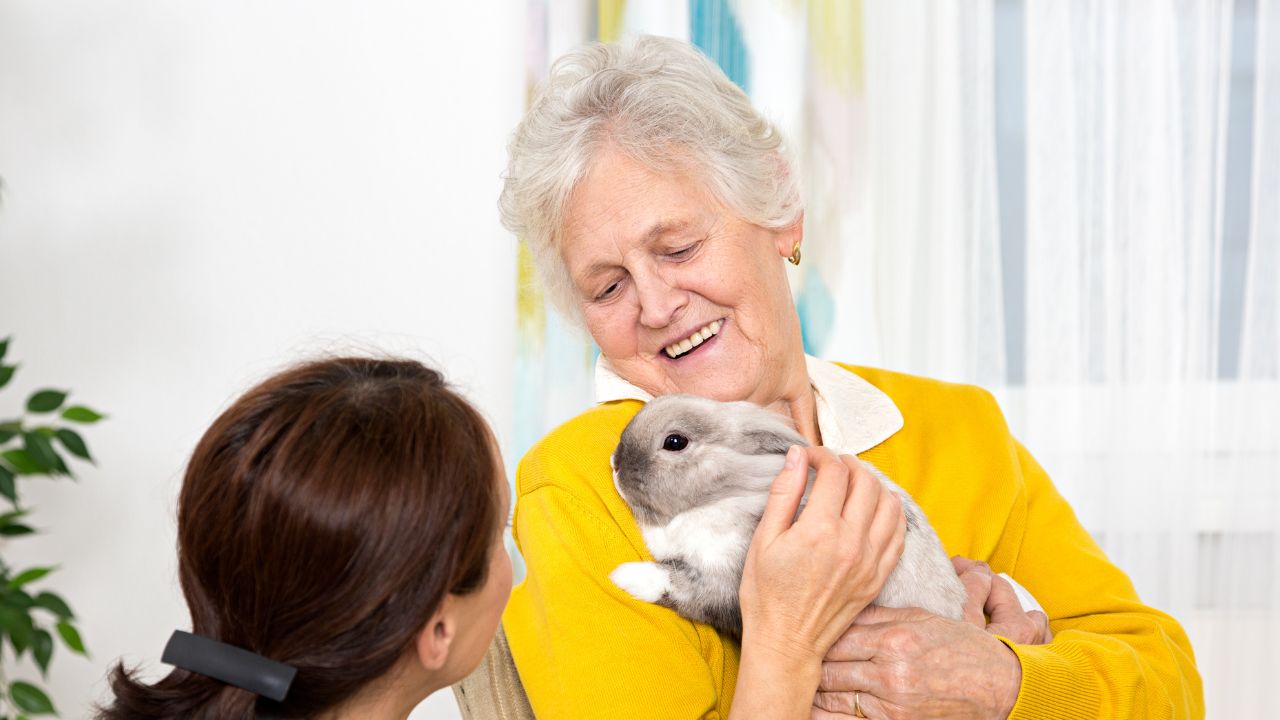Pet Therapy in Elderly Care Homes can play an important role in the overall well-being of older people, especially for seniors with Dementia or Memory Care needs.
Animal Assisted Therapy (AAT), Animal Therapy (AT), Pet-facilitated Therapy (PFT) is not a new phenomenon, rather this field of study has been there for centuries and was also used by the leading neurologist Sigmund Freud.
AAT is when animals are used in goal directed treatment sessions. These goals can be physical, mental, emotional and/or social. A visitation program is when animals accompany their owners to a facility and visit the patients or residents.
AAT is often used to combat and reduce loneliness amongst older people and/or to increase socialization within community.
Animal Assisted Activity (AAA) is, “an activity that provides opportunities for motivational, educational, recreational, and/or therapeutic benefits to enhance quality of life”.
During his impressive and significant research contribution, Sigmund Freud ascertained that dogs have an extraordinary intelligence that gives them the ability to read a person’s disposition.
For this reason, he permitted his own dog to be present at his therapy sessions. Freud admitted that he often depended upon the dog for an evaluation of the patient’s mental position.
He felt that the attendance of the dog appeared to have a soothing influence on all clients, particularly children.
Though there are different species of animals which can be used in Animal Assisted Therapies, like horses, dolphins, farm animals, however it is easier to manage therapy sessions with dogs, cats and robotic animals.
In Senior Citizen Care Homes, residents tend to experience feelings of loneliness and isolation. This can be due to mental health issues, loss of a spouse, feeling far from family and friends or confusion.
Research has shown that animal assisted interventions can help reverse the feelings of loneliness, isolation and can bring a smile on the lonely faces.
Though India is blooming into a beautiful Elderly Care sector, however there is a lot of existing knowledge which the industry can learn, adopt and use for the welfare of Senior Citizens.
The attached document, “Pet Therapy Interventions for Older Adults Experiencing Loneliness in Long Term Care Facilities” is a short and crisp read.
Document can be accessed on the website https://applebaum.wayne.edu/ or downloaded here (Pet Therapy Interventions for Older Persons) or can be read below
